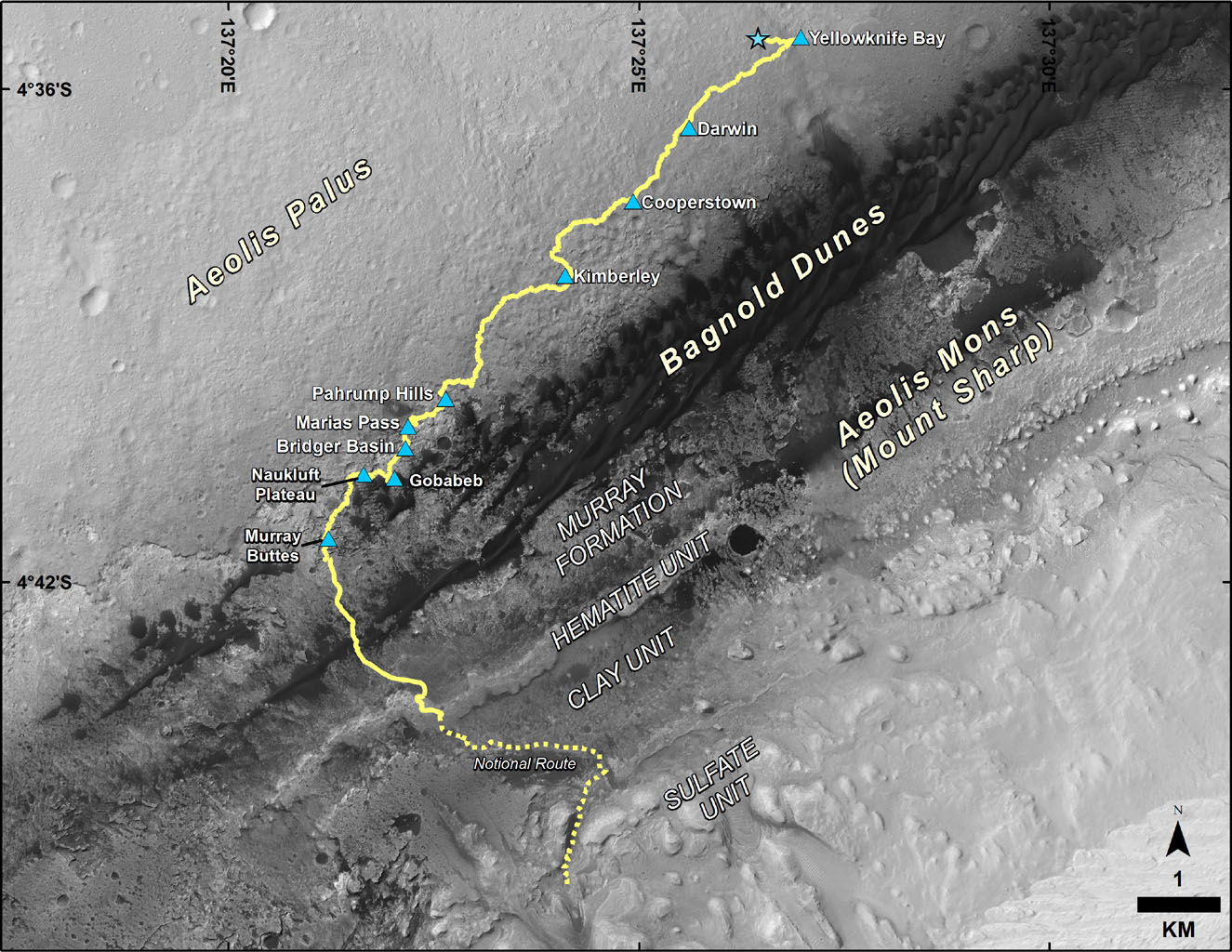NASA’s Curiosity rover has completed its survey of “Murray Buttes”, and is now set to venture even higher along the slopes of Mount Sharp. The intrepid rover took the opportunity to snap a selfie as it proudly stood in front of some rather dramatic Martian features.
This striking image, taken on 17 September 2016, is actually a composite of 60 individual pictures taken by the rover’s Mars Hand Lens Imager (MAHLI). The camera and the arm are not included in the composite, which is why it looks as though a Martian inhabitant took the time to snap a pic of the four-wheeled exploratory vehicle.
The dark mesa in the background is called “M12”, and upper Mount Sharp can be seen at the top right. M12 stands about 7m above the base of the sloping rocks seen just behind the rover. For the past several weeks, Curiosity has been drilling and collecting rock powder samples in the region. Many of the pictures taken during this phase of the mission have been some of the best we’ve ever seen, revealing intricate eroded rock formations.
Click here to download wallpaper versions of the top pic.
With the Murray Buttes region conquered, NASA scientists have set their sights to a destination that will require the rover to do some further climbing. Curiosity is scheduled to make a 2.5km uphill trek where it will explore a ridge rich in iron-oxide-rich hematite. Beyond that, the rover will investigate an exposure of clay-rich bedrock.

The route driven by Curiosity from the location where it landed four years ago to its current location at Murray Buttes, and the path planned for reaching destinations at “Hematite Unit” and “Clay Unit” on lower Mount Sharp. (Image: NASA/JPL-Caltech/Univ. of Arizona)
Both of these areas likely originated from different environmental conditions, but the mission scientists are eager to see if either of them might have once hosted a habitable environment; both hematite and clay typically form in soggy conditions.
“We continue to reach higher and younger layers on Mount Sharp,” noted Curiosity Project Scientist Ashwin Vasavada in an agency release. “Even after four years of exploring near and on the mountain, it still has the potential to completely surprise us.”
In addition to the selfie, NASA has also released a stunning 360-degree interactive panorama. Using your mouse, you can manually steer Curiosity’s camera and investigate the barren Martian landscape.
